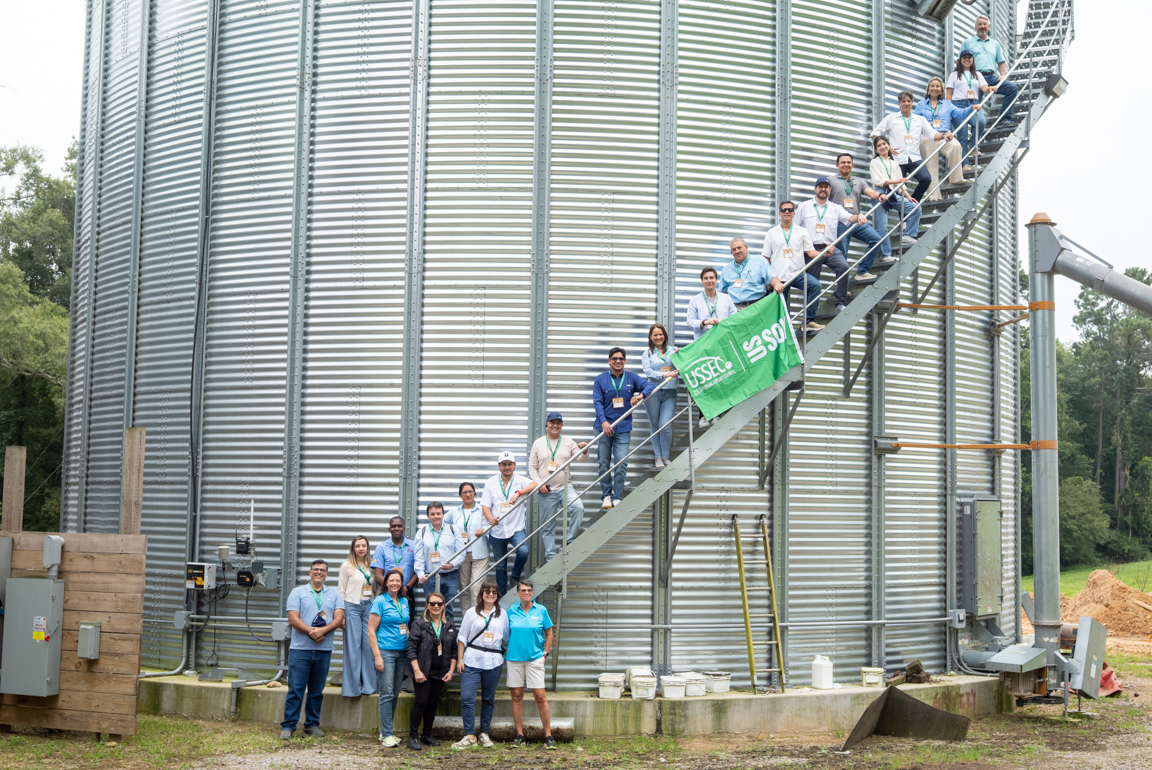Goodyear Chief Engineer Shares Soy Story

At first glance, your soy checkoff and The Goodyear Tire and Rubber Company may not seem like they have too much in common. But they have formed a strong collaboration with common sustainability goals as their foundation.
New uses for U.S. soy not only create new, sustainable products for consumers, but they also increase demand for U.S. soy and profit potential for U.S. soybean farmers — the primary mission of the soy checkoff. The checkoff and Goodyear have worked together for nearly a decade to increase sustainability and utilization of U.S. soy in their products.
We sat down with Bob Woloszynek, chief engineer of Goodyear’s global raw material development and approvals group, and its global reinforcements technology group, to chat about the company’s switch to soy.
Introduce yourself and tell us a little bit about your role with Goodyear.
Well, my name is Bob Woloszynek. I’ve been with Goodyear since May of 2007 and have held various roles within Goodyear’s global material science organization. I have a Ph.D. in organic metallic chemistry from Case Western Reserve University.
In my current position, my group is tasked with the approval of all raw material sources throughout Goodyear in the Americas region, which includes North America and South America. Any new material that we evaluate for potential use, in all areas, comes through my team.
What was the genesis of Goodyear switching to soy?
The funny thing is, people really don’t appreciate the complexity of a modern tire and what is required in terms of performance and durability. Most people just take it for granted because it seems simple. But to make this simple, foundational product, we look at a number of different types of materials for any sort of performance benefits to take tire technology to the next level. One of the products we evaluated was soy.
It started about a decade ago. Back in 2010 and 2011, petroleum oil prices were very high. And we were looking at sustainable technologies and whether or not they could provide benefits. Our collaboration with the soy checkoff has been going on since around the same time, and it’s been tremendous. Since that time, we’ve had collaborative projects that continue to push our internal developments further and further to hopefully continue to expand into additional products. The checkoff has been with us step for step, even connecting us with key contacts, such as folks in the fleet industry with ties to the checkoff’s work with biodiesel.
The checkoff has also amplified our work on the marketing side, helping to get the message out that Goodyear products now contain soybean oil. I really think the farmer investment and collaboration are big reasons why Goodyear is where we are today with our use of soy.
Now as time has gone on, we have a huge sustainability initiative. We’re being very aggressive within the industry by promoting our sustainable technologies and trying to increase the use of sustainable technologies.
Goodyear recently announced a new sustainable soybean oil procurement policy that reflects its strong commitment to the responsible sourcing of raw materials. Goodyear increased its use of soybean oil in 2020 by 73% over 2018, making progress toward its long-term goal of full petroleum replacement. The new procurement policy features a variety of components, including provisions across the supply chain for responsible land use, growing, harvesting and processing. With its goal to be a global leader in sustainability, the U.S. soy industry is well-positioned to meet this demand.
Performance wise, what made U.S. soybean oil a candidate to replace petroleum?
Soybean oil, as a triglyceride, has some unique properties compared to petroleum-based oil. And part of that early work was thinking, “This is pretty unique. Can we leverage those unique properties to give us something that we currently don’t have?”
In some of that early development work that I was involved in, we found significant benefits that soybean oil provided compared to conventional oil. The main one is it mixes much better with the rubber that we use in our tire compounds, so it actually provides more viscosity reduction. We have to use some type of oil in our manufacturing process, but the other options don’t bring much to the table in terms of performance. But with soy, we learned we could really expand the performance benefits of a tire with the oil.
Tell us about sourcing U.S. soybean oil.
As we continue on our journey to meet our goal of replacing all petroleum-based oils in our tires by 2040, and as those volumes continue to increase and we become more familiar and this starts getting implemented across more plants and more tire lines, any initial complexity barrier is going to totally be behind us. And we can count on U.S. soybean oil to be produced sustainably and readily available, so we can treat it like any other commodity raw material that goes into our tires. So we’re really excited.
What are Goodyear’s goals when it comes to sustainability, and do you think having U.S. soybean oil in your supply chain helps those goals?
We have many goals around sustainable sourcing. One of the long-term goals from our recent corporate responsibility report is to fully replace petroleum oil in our products by 2040. We’re in the initial stages of it, but we couldn’t make that claim without material technologies like soybean oil that have demonstrated performance benefits and versatility, in addition to sustainability, compared to petroleum.
Because of its performance and sustainability benefits, we set a near-term goal to increase our usage of soybean oil by 25% from our baseline in 2018. By the end of 2019, we had already increased it by well over 70%.
With Goodyear’s stated goal of fully replacing petroleum in our tires and with the number of tires Goodyear produces every year, we are certainly committed to expanding the use of soybean oil in our products significantly — and we’re already off to a great start. It’s a significant need in our premium products, and I really think that our soybean oil use is just going to continue to grow year after year.
As soybeans continue to grow and tires continue to roll off of the assembly line, U.S. soybean farmers look out onto their fields knowing that the demand for their soybeans continues to grow with the collaboration between the checkoff and Goodyear.



